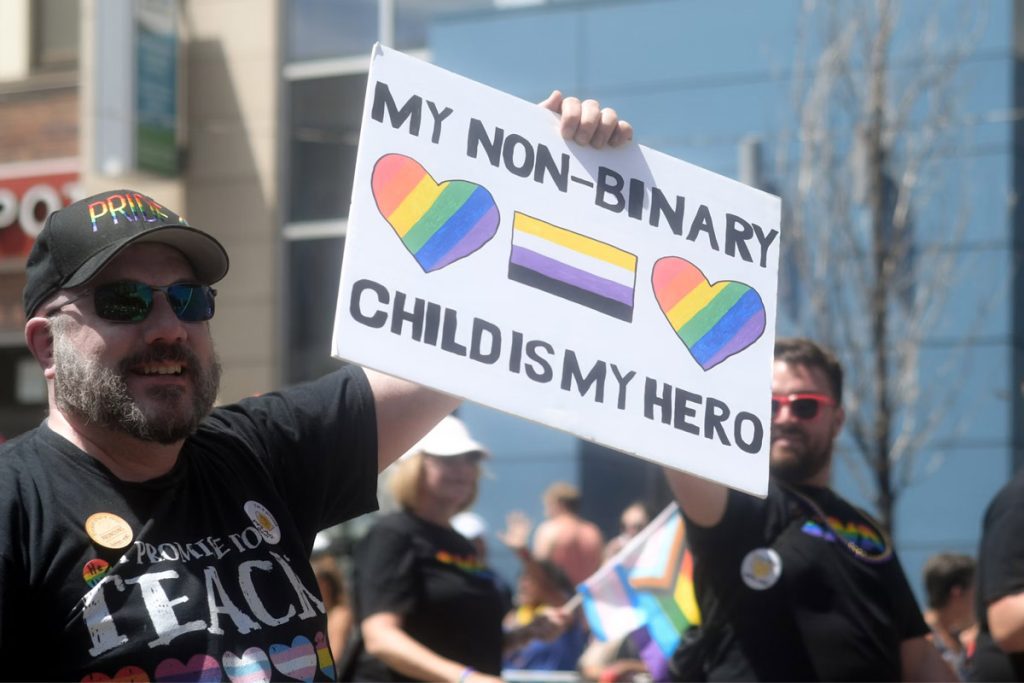Every child deserves to feel safe at home. However, recent attacks on LGBTQ+ teens and young adults may make your kids feel uncomfortable in any space other than their bedroom. This concern is highlighted by recent FBI data, which show a 13.8% increase in attacks based on sexual orientation and a 32.9% jump based on gender.
LGBTQ+ youth don’t just need to be shielded from physical harm. Many young people entering the LGBTQ+ community for the first time feel nervous about their identity and may lack support at school. These children need to be supported at home and should be able to share their thoughts and feelings with you.
As a parent, you can do your part to ensure your child feels safe, welcome, and nurtured by creating an atmosphere that welcomes self-discovery and protects children against threats.
Understanding the Challenges LGBTQ+ Youth Face
A recent Trevor Project report on LGBTQ+ mental health reflects some worrying trends in the queer community. The report surveyed 34,000 LGBTQ+ youth and found that 45% of respondents had seriously considered suicide in the past year. These alarming statistics underline the challenges of being LGBTQ+ in the United States today. Other key statistics include:
- Less than 1 in 3 LGBTQ+ youth say that their home is gender affirming
- LGBTQ+ youth who receive support at home are half as likely to attempt suicide
- 73% of LGBTQ+ youth experience anxiety
- 58% experience depression
- 60% of LGTBQ+ youth wanted mental health care but could not access it
- Of those who could not access mental health care, 45% cited concerns regarding parent/caregiver permission
Many factors influence the high levels of mental health concerns that LGBTQ+ individuals experience. The stress of coming out can lead to further anxiety afterward, and the LGBTQ+ community is at a high risk of experiencing violence and trauma. For youth, the risk and reality of being bullied at school can lead to increased anxiety and depression.
Creating a supportive home environment can make a world of difference to your LGBTQ+ child. This is more important today than ever before, as many LGBTQ+ youth are still feeling the fallout of the pandemic. Similarly, many transgender children have been directly impacted by discriminatory legislation that denies them access to the medical care that they deserve.
Becoming an Ally
Stepping up as a parent for LGBTQ+ youths is both a challenge and a privilege. You get to help your child at a crucial time in their life and must be ready to help them navigate the potential difficulties and setbacks they may face. This can be daunting if you’re not part of the LGBTQ+ community yourself.
You can become an ally for your child and make your home a safe space by educating yourself and recognizing your privilege. Kayla Christenson, Director of Communications at Pflag Canada, echoes this sentiment, stating that effective allyship is about “owning your mistakes without ego and being open to learning and growing.”
This also means you may need to speak up when your peers use homophobic language or repeat prejudiced talking points. Speaking up and advocating for your LGBTQ+ child shows them that you always have their best interests in mind and prioritize them over anyone else.
It’s important to remember that, even as a parent, you won’t always have the answers to your child’s questions. This can be tough to admit, but acknowledging what you don’t know is an essential part of allyship. Rather than making things up on the spot, consider joining parent-support groups and reaching out to local organizations designed to support LGBTQ+ youth and their parents. This will help you get up to speed quickly and teach you how to recognize the signs of distress early.
Personal Devices
Social media can be a challenging space for LGBTQ+ youth to navigate. On the one hand, many LGBTQ+ youth find support and community when engaging with their peers in virtual spaces. On the other, some users are exposed to hate speech and bullying when surfing the web.
As a parent, try to keep an eye on your children’s screen time while they’re at home. Speak openly with them about the potential pitfalls of social media and listen to them if they want to tell you about the community they’ve found online. You can also take steps to unplug as a family by putting the screens away every evening. The benefits of unplugging include:
- Continued Learning: Reading, writing, and other family-oriented activities help children develop practical skills that will serve them well for the rest of their lives.
- Health: Turning off the screens can give you a chance to teach children how to lead healthy, active lifestyles. Just be sure to engage in exercises and activities that your kids enjoy.
- Behavior: Children who spend time with their families are less likely to engage in dangerous behavior and more likely to exhibit signs of altruism.
Before taking your children’s devices away, explain why you think some time away from the screen is a good idea. This reinforces the idea that they are part of the decision-making process and helps them understand why you want to spend more time together without devices. Chances are, after an adaptation period, children will learn to look forward to reading books, talking about school, or spending time outdoors.
Conclusion
Creating a safe space at home for LGBTQ+ youth is all about educating yourself to become the best ally possible. This will empower your child and help you make strategic decisions to limit screen time and have helpful conversations with your children. Just be ready to admit what you don’t know and help your LGBTQ+ child connect with a supportive local community.
About the Author: Katie Brenneman is a passionate writer specializing in lifestyle, mental health, education, and fitness-related content. When she isn’t writing, you can find her with her nose buried in a book or hiking with her dog, Charlie. To connect with Katie, you can follow her on Twitter, @KatieBWrites93.
The opinions and views expressed in any guest blog post do not necessarily reflect those of www.rtor.org or its sponsor, Laurel House, Inc. The author and www.rtor.org have no affiliations with any products or services mentioned in the article or linked to therein. Guest Authors may have affiliations to products mentioned or linked to in their author bios.
Recommended for You
- The Truth about Relapse in Addiction Recovery - April 14, 2025
- The Power of Peer Support in Mental Health Recovery - April 10, 2025
- Artificial Intelligence in Anxiety Management: How AI Helps Users Cope with Anxiety Symptoms - April 3, 2025






I think this article is even more relevant in today’s political climate. I agree that parents will not always know how to answer questions their child has. I think acknowledging this does show humility and allyship from the parents